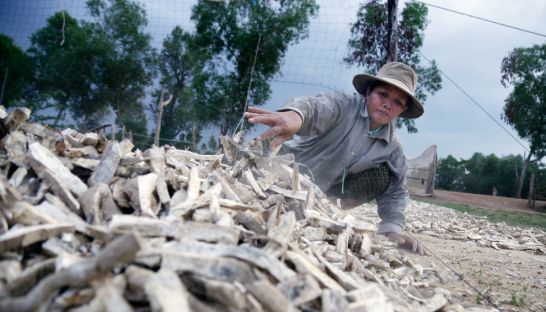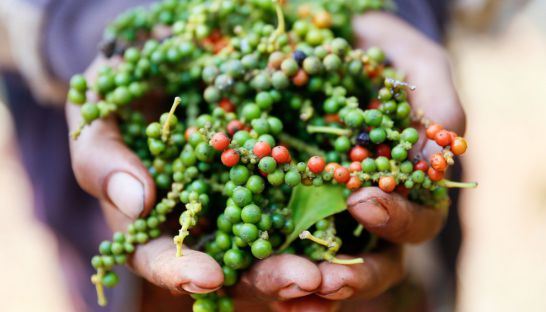Cassava prices hit a new low
Cassava prices hit a new low
Cassava prices in Cambodia experienced a sharp drop this month leading to heavy losses for smallholder farmers unable to quickly switch to more profitable crops and recoup their mounting losses, a provincial agriculture official said yesterday.

Faced with low prices of around 144 riel ($0.035) per kilo of fresh cassava at the beginning of the harvest season, which runs from December to April, farmers decided to delay collecting the starchy tuber, only to see prices plummet to a historical low of 108 riel ($0.026) per kilo earlier this month, explained Soy Sopath, agricultural director for Pailin province at the Ministry of Agriculture.
With a breakeven point of 180 riel ($0.044) for fresh cassava, the farmer’s fate went from bad to worse as they are now forced to sell their products at a large loss, he said.
“This price is far worse for the farmers than the one at the beginning of the season, which already was under the breakeven point, leading to a total loss of profit for them,” he said, adding that the market price had fallen about 30 percent since 2014.
Prices of dried cassava have moved in tandem, falling from as high as 720 riel ($0.176) in 2014 to the current level of between 360 and 420 riel ($0.088-$0.102).
Cassava, which is considered to be a cash crop in Cambodia as it is rarely consumed by locals, is popular to grow as it requires less water and fertilisers, and is less prone to disease than other crops, Sopath explained. The government has made numerous attempts to wean Cambodian farmers away from cassava, yet its cultivation continues to expand.
“Farmers keep harvesting cassava because it is not a complicated crop to grow, and its price might increase next season,” he said.
However, falling prices have seen a decline in cultivation in Pailin province, the heartland of cassava cultivation where 90 percent of farmers are involved in the sector. Total cultivation in the province decreased 20 percent this season compared to last, according to Sopath, who said he expected further decline as farmers look to other more profitable crops.
Khat Kheang, a cassava farmer who owns a 7-hectare plot in Pailin province, said she experienced significant losses this year on her 120-tonne harvest.
“Cassava farmers are exposed to huge risks as no one is helping us to guarantee adequate market prices,” she said. “Some farmers in my area gave up and decided to move to other countries to find work as they no longer have enough money to continue farming.”
Kheang said she would turn to mango harvesting on 2 hectares of her land to try to recuperate some of her lost revenue.
Hean Vanhan, undersecretary of state at the Ministry of Agriculture, recognised that prices had fallen significantly, but said his ministry could not guarantee prices for farmers as this would be the responsibility of the Ministry of Commerce since harvested cassava is an export product and not for local consumption.
“We know that the cassava prices have decreased sharply and as Cambodia depends on other countries for its market access this makes the situation even worse,” he said.
“We cannot handle the market issues for the farmers in this case because it is up to the Ministry of Commerce to improve access to the market.”
However, Soeng Sophary, spokesperson for the Ministry of Commerce, explained that the Ministry of Agriculture and farmers needed to work together to collect and share information in order to better understand price trends in foreign markets so that farmers could time cassava cultivation to satisfy external demand.
“If farmers and agriculture officials cooperate and work smartly to find the right time for cultivation then they would not suffer from such heavy losses,” she said. “In order to add value to cassava, we need to have better quality standards and more technical expertise for processing it in factories.”
According to Ministry of Agriculture data, total cultivation of cassava grew to 684,070 hectares by the end of 2016 and is expected reach 697,751 hectares this year.














